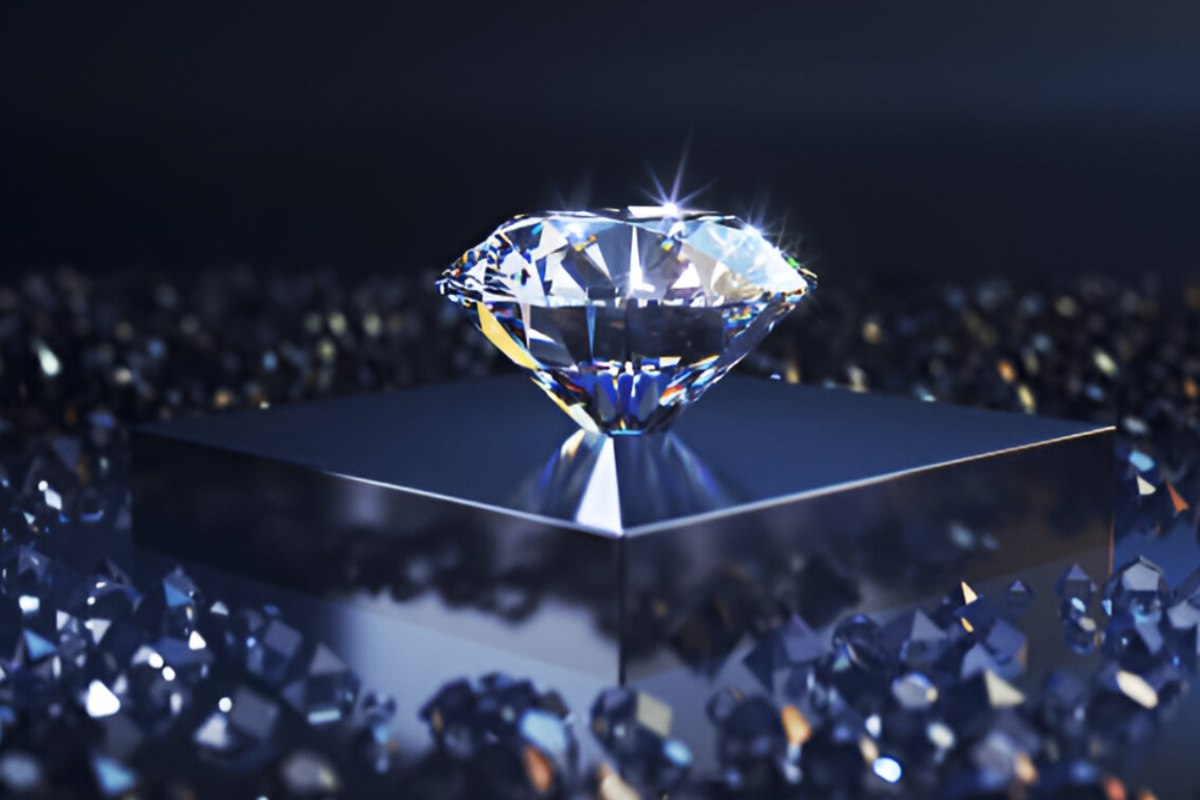Diamonds have, for generations, symbolized love, luxury, and commitment. The options now include various diamonds. You can choose from traditional mined diamonds or alternatives. These options cater to different tastes, ethical concerns, and budgets.
Knowing these differences helps buyers choose the right stone.
Table of Contents
Natural Diamonds
Natural diamonds form in nature over billions of years. They develop deep inside the Earth under intense heat and pressure. They are mined from various parts of the world, such as Africa, Canada, Russia, and Australia. These diamonds boast rarity and historic significance. No two mined diamonds are the same. Each one is formed by nature and has unique inclusions. These inclusions tell their own formation story.
One key feature to consider when buying a natural diamond is its certification. Reputable gem institutes, like the Gemological Institute of America and the American Gem Society, grade diamonds based on the four Cs: cut, color, clarity, and carat weight. Natural diamonds are classic and beautiful. However, larger carat weights can be very expensive. Also, ethical mining issues have led to the rise of other options.
Lab-Grown Diamonds
Lab-grown diamonds, also known as synthetic or cultured diamonds, are gaining recognition as an ethical and eco-friendly alternative to mined diamonds.
They are created in laboratories using high-pressure, high-temperature (HPHT) or chemical vapor deposition (CVD) processes, which mimic the natural formation of diamonds. These diamonds share the same chemical, physical, and optical properties as natural ones. They often cost less, too. You can enjoy a beautiful diamond without worrying about environmental damage or unethical mining.
Cultured diamonds have a big advantage: they cost 30–40% less than natural diamonds. This allows buyers to choose a larger or higher-quality stone without spending more. Many think they are better for the environment. Mining natural diamonds can harm ecosystems. Some people still choose natural diamonds. They value their rarity and sentimental worth. So, the decision often comes down to personal preference.
Treated and Enhanced Diamonds
Some diamonds get extra treatments. This makes them look better and more affordable. These include laser drilling to remove inclusions, filling cracks to hide flaws, and high-temperature heating to enhance color. These processes transform diamonds that could be thrown away into stunning, affordable choices for buyers.
Buyers have the right to know about treatments. These treatments affect the stone’s long-term durability and value. Treated diamonds should be sold with clear disclosure. They should cost less than similar untreated diamonds. These treatments may look perfect at first, but an expert can spot them on close inspection. Some treatments also need special care to keep the diamond in good condition over time.
Colored Diamonds
Most diamonds are clear and colorless. However, naturally colored diamonds are rare and possess great value. Called fancy-colored diamonds, they get their colors from trace elements or structural changes. Popular shades include pink, blue, green, yellow, and even red.
The fancy yellow diamond is the most common among colored diamonds. Its color usually comes from nitrogen impurities. The blue color of diamonds, like that of the Hope Diamond, is due to boron. Pink and red diamonds are the rarest. Their color comes from unique atomic structures altered by pressure. Natural-colored diamonds are rare. Because of this, they often cost much more than colorless diamonds.
Lab-grown colored diamonds are also available and much more affordable. They offer bright shades without the high price of natural fancy diamonds. These diamonds are made through controlled processes that mimic nature. They’re perfect for anyone who loves unique gemstones but wants a lower cost.
Diamond Simulants
Diamond simulants are stones that resemble diamonds. However, they don’t share the same chemical makeup. The most popular diamond alternatives are cubic zirconia, or CZ, and moissanite. These options shine like diamonds but cost much less. However, they don’t have the same hardness or brilliance.
Cubic zirconia is a popular diamond substitute. It offers brilliant clarity and shine. However, it is not as strong as a real diamond. It is significantly softer and will become prone to scratching over time.
Moissanite is a stronger and more brilliant alternative that visually resembles the brilliance of a diamond. Moissanite has a unique refractive quality. Many see it as the top diamond alternative. It offers great affordability and durability.
Ethically Sourced Diamonds
More consumers care about ethical and environmental issues. Many now seek diamonds that are ethically sourced. Conflict-free diamonds stop sales that fund wars.
Some retailers sell fair-trade or Canadian diamonds. These options guarantee high labor and environmental standards. Lab-grown diamonds are a popular ethical choice. They skip exploitative labor and reduce environmental harm.
With these options, buyers can make value-based choices. Every diamond—natural, eco-friendly, or lab-grown—shines with its own beauty and value in jewelry.

